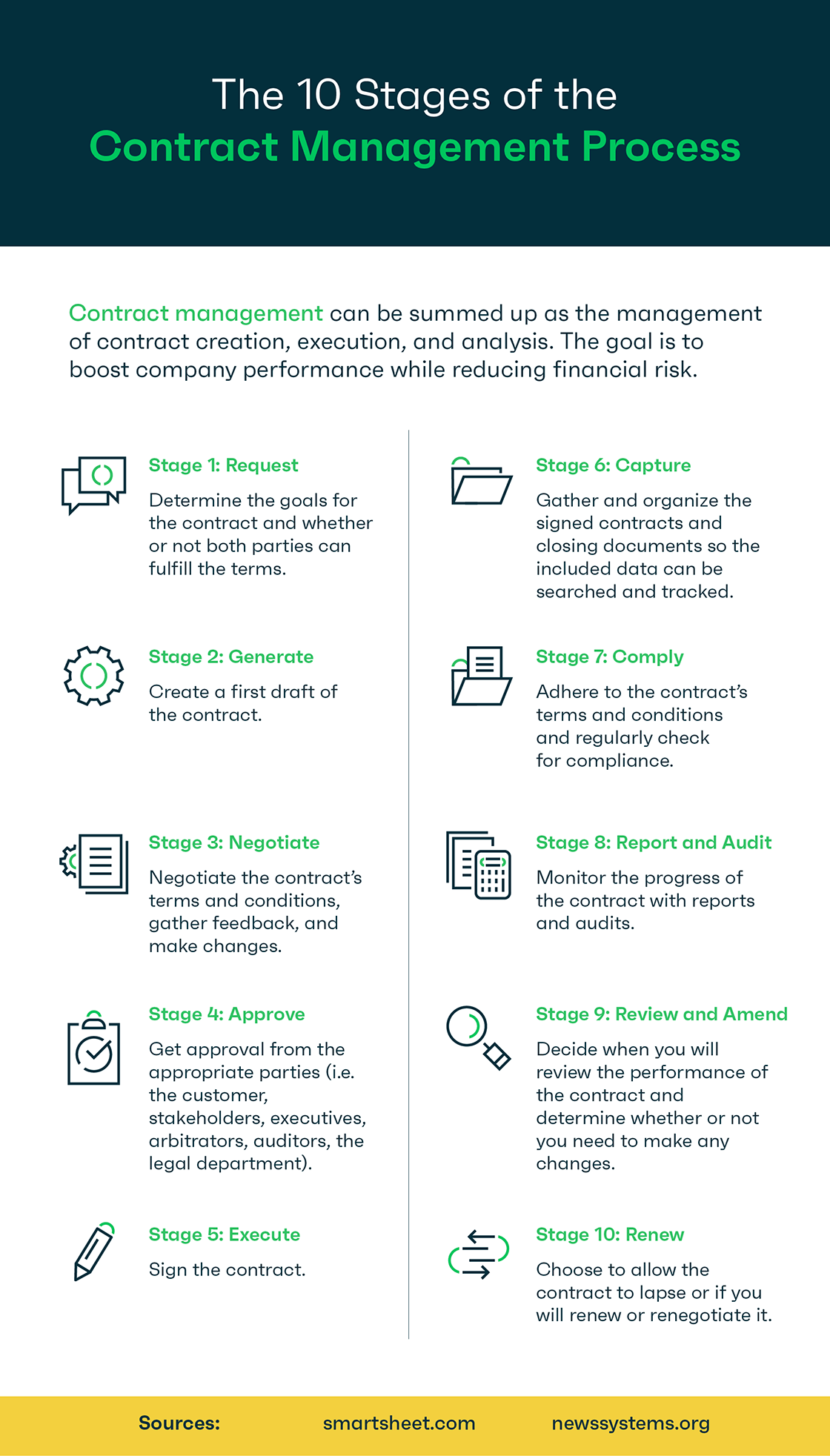Contract management has long since evolved beyond a legal department file room housing an organization’s contracts. And that’s a good thing.
In this article, you will not only learn how to improve your contract management, but you will also see how such improvement can make your entire contracting process more efficient and lead to greater profitability.
What is Contract Management?
Contract management can be summed up as the management of contract creation, execution, and maintenance. The goal is to simultaneously optimize company performance and reduce financial risk. Contract management views the entire lifecycle of contract relations as a business process. And as a business process, it can be measured, analyzed, and—most significantly—improved. Effective contract management goes far beyond protecting an organization from legal risk; it makes the contracting process run more efficiently so a company can operate more profitably.
What is a Contract Management Plan?
A contract management plan should be broken down into three basic steps:
- Creation: the first step is the actual contract negotiation and creation. This can occur after direct negotiations with the customer, vendor, contractor, or another counterparty, or after award of a contract bid.
- Execution: the next step is contract execution, which requires one party to deliver on the contract goods or services and the other party to receive back goods or services.
- Maintenance: the final, perhaps most critical, stage is maintenance. Missing milestones and other key contractual obligations—as well as renewals—can lead to very costly errors, so it’s crucial to regularly monitor the contract after it has been executed.
Using the Contract Management Process to Unlock Contract Value
While corporate law departments traditionally viewed contracting as a legal process, it’s better to understand contracting as a business process. This key insight can guide process management, process measurement, and ultimately process improvement.
Develop a Process Map
Begin by developing a procedure to map out your contracting process. Using the basic three steps outlined above, go to your front-line business development team to determine sub-steps you can input into your overall contract management process. There are several components to each step in your contract management plan. In the preparation before the creation phase, there are internal policies and procedures that guide standard issues, requests for information, tracking of potential contract clauses, and authoring of preliminary drafts. The creation phase generally includes contract negotiation and internal approvals required in your contracting process. The execution phase primarily involves the signing of the contract. Finally, the maintenance phase calls for regular checks for compliance, auditing of the goods or services provided, and ongoing monitoring of the contract execution—all of which have the potential to lead to renewals.

Automate Manual Processes
Once you map out the contract process in your organization, you can dig into ways to automate manual processes. For instance, artificial intelligence (AI) and machine learning can create a feedback loop to engage in continuous improvement in your contract management process.
Take, for example, a large organization with multiple sales contracts with one customer across the globe. The above automation process can help a company view and standardize discounts and pricing. Without such visibility into the process, a company could offer multiple discounts for the same products and services without realizing it. Previously, a company may keep track of all those discounts by way of a laborious excel spreadsheet. With automated contract management, on the other hand, the process is much more transparent and efficient.
Improve Other Components with AI
Initially, AI can be used to review large numbers of contracts for anomalies, non-standard terms and conditions, and pricing variations. And in the area of risk management, AI and machine learning can facilitate the notation of contract clauses in breach of company policy, perform a gap analysis to identify missing clauses that should be included in a contract, and review a variety of factors about the contents of a contract and the counterparty to automatically assess contract risk.
Standardize without AI
Even if you cannot move directly into AI to improve your contract management process, there are several low- to no-cost steps you can take now to improve your process. This includes the standardization of contract terms and conditions. If a standard form agreement is available to your business team, it can be used without approval from your corporate legal department since all these terms and conditions have been pre-approved. Pricing and other commercial terms can be reviewed and approved by an appropriate level of business personnel, such as the VP or EVP of sales. This can reduce your contracting process cycle which can result in real-time monetary savings. It also provides an audit trail that can help reduce any collateral damages in the case of a dispute.
Conclusion
Contract management is a growing area ripe for positive change. Corporations can make the business process of contracting more efficient and unleash the potential value in the contracting process itself, thus leading to greater profitability. Contract management also improves an organization’s risk management process by allowing the review and assessment of a wide variety of contracts on a real-time basis. Finally, the legal requirements of various laws and regulations, such as Sarbanes-Oxley and Dodd-Frank, mandate an auditable contracting process. Successful contract management helps companies comply with these laws and regulations as well as unlock value hidden in the contracting process.
